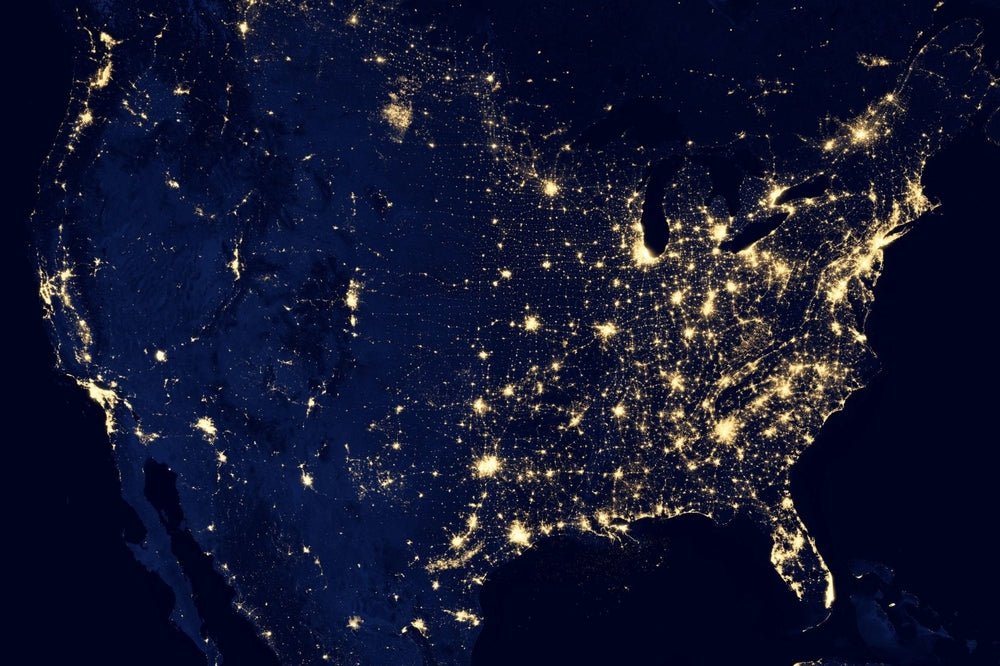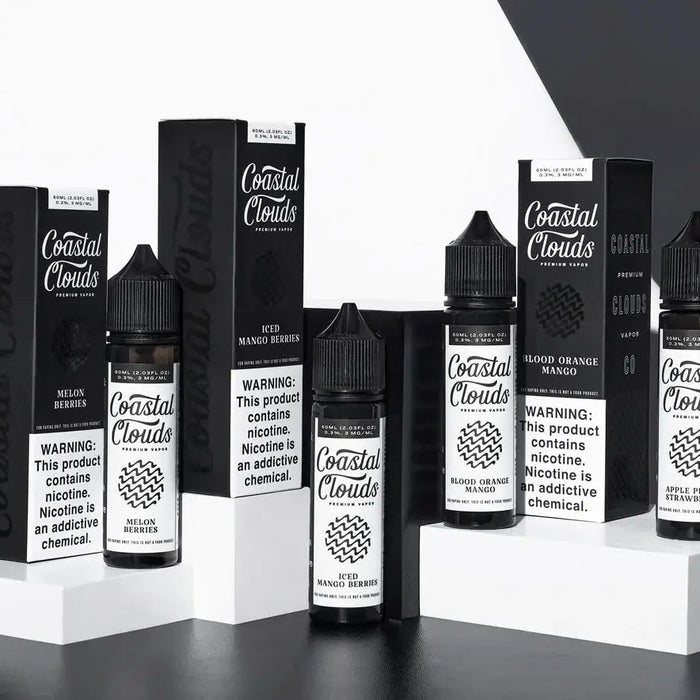Hey everyone! Welcome back to the blog, where we tackle current vape news, eJuice reviews, and various vaping topics. Today we’re going to discuss an incredibly relevant topic that’s been sweeping the nation: the ban of flavored e-liquids.
WHAT STARTED THIS PROBLEM?
The root of this problem stems from THC, a common additive to vape juice to deliver a more powerful vaping experience. THC is the psychedelic element of the hemp plant that gets the user “high.” While the government is finally starting to understand the benefits of medical marijuana, recreational marijuana is a huge unregulated market. Specifically, many companies are producing liquid THC and mixing it with dangerous additives to create “synthetic weed.” Since this synthetic weed is designed to be inhaled, or “vaped,” it tarnishes the entire vaping experience and creates a negative connotation with regular e-liquids.
Once this synthetic weed became more and more popular, more and more people started getting sick. As a result, the government swooped in and tried to rally the nation against vaping. Vapers fought back hard, insisting that not all vaping was bad and that this synthetic THC was the true culprit of people getting sick. If you look closely at every report on the news, either in article or TV form, THC will be mentioned. But since very little is known about the long-term effects of vaping, the media pounced on this opportunity to convince the nation that vaping is bad, even worse than cigarettes. People began to panic.
WHO WAS AFFECTED? NOT JUST THE HIPSTERS, BUT NOW TEENS
While it’s true that vaping started out as a fad and a trend, it quickly gained traction with the millenials. Now that all the cool guys were doing it, the cool kids wanted to jump on board. Who could resist the fascination of smooth white clouds billowing from your lips, and with enticing flavors like Sour Patch, Peach Apple, and German Chocolate Cake, it was difficult, if not impossible, to resist. But vape shops were aware that there was a strict age limit for their customers, and that age limit was meticulously enforced. Anyone walking into a vape shop or buying online had to provide proof of age with a valid ID, just like regular cigarettes.
But then a new company came on the scene: JUUL. While JUUL didn’t create the problem, its sleek design and discreet appearance were attracting quite a younger crowd. And JUUL was sold in gas stations and convenience stores across the country, where the clerks weren’t as dutiful in checking ID’s and judging ages as the vape shops were. Word spread that JUUL was easy to acquire and offered sweet flavors like Mango and Creme Brulee. JUUL tried to solve this problem by discontinuing the fruit and dessert flavors, but the damage was already done. Underground companies began to create their own bootleg prefilled cartridges to replace the tasty flavors JUUL had gotten rid of. Several companies also offered THC as a solution for a stronger high. Because, come on, synthetic weed and black market Juul-like pods...what could go wrong?
A LOT. People began getting sick, roughly 1200 cases and climbing. Twenty-six patients actually died, and then that’s when people began pointing fingers at vapers and eJuice companies entirely. The nation needed someone to blame, and the vape industry served that purpose beautifully. You can bet the King Tobacco was laughing hysterically, watching the panic unfold.
WHICH STATES BANNED E-LIQUID, BOTH PARTIALLY AND COMPLETELY
Here are the seven states that imposed a ban in some shape or form, all in the name of protecting their teenage population. Some bans restrict all vaping products, whereas other states imposed a temporary ban until more research was done. Others kicked vaping to the curb entirely, refusing to admit that vaping actually serves a purpose in helping smokers kick the habit.
Michigan
The state that is most famous for the Great Lakes acted swiftly to restrict the sale of flavored e-liquids, both online and retail. In addition to halting sales, Governor Gretchen Whitmer also sternly forbade retailers from using key words such as “healthy” (as in healthy alternative to smoking), safe (as in safe for long-term smokers), and clean (as in help clean out your lungs). While it is definitely agreed that vaping is a better alternative to smoking, there is little known about the adverse health effects of long-term vaping. As such, the use of those three keywords were perceived as misleading and deceptive to those inexperienced vapers. While Michigan was indeed the first to ban the sale, the ban was actually overturned a little less than a month after it was passed. Thanks to a judge who agreed with retailers that the governor had overstepped her bounds, flavored e-liquids are once again sold freely in the Wolverine State.
Los Angeles & San Francisco, California
While Michigan was the first to restrict the sale, San Francisco (one of the most famous cities in California) decided to completely ban all e-liquids, tobacco and menthol included, as well as any form of e-cigarette hardware. This is particularly interesting because Juul, the company that has been blamed for the downfall of vaping, is actually located in San Fran. Juul is frantically funding a ballot that would overturn the ban, thus allowing the continuation of Juul devices and pods. Los Angeles seems to be following closely behind, threatening to pass a ban that would exist until the FDA dicates that e-cigs are indeed safe.
New York
The Empire State actually contains one of the largest population of vapers in the U.S., all of which were furious at the threat to remove flavored e-liquids from their shops and online stores. Governor Andrew Cuomo tried to enact an “emergency” executive order that would remove the temptation of flavored vape e-liquids from minors and underage vapers, thanks to the enticing flavors in Juul pods and other vape juice companies. Currently, the legal age limit for buying cigarette products is 18, but Cuomo attempted to raise that age limit to 21. New Yorkers fought back hard, blocking the ban temporarily as well as the proposed legal age change. While New York City is still protesting the ban, Long Island officially passed the ban that only tobacco and menthol flavors are allowed to be sold across the island.
Washington
Here’s where the real fun begins. Washington passed a ban that was limited to only four months, but could be extended further. There was a slight twist in this ruling: in addition to all flavored e-liquids, all flavored e-liquids containing THC would also be limited. Washington’s governor claimed that the ban would not only save lives, but was in the general interest of the people’s health.
Oregon
Once Washington passed their ban, Oregon followed closely behind. But instead of four months like Washington, Oregon opted for a 6 month ban that halted the sale of flavored e-liquids containing nicotine and cannabis. However, products using 100% pure marijuana terpenes were allowed. The Center for Disease Control only addressed products that had THC additives as being the cause of several vaping illness cases.
Montana
The theme of bans over a short time period continues with Montana. Yet Montana went a different route with their all-inclusive ban of CBD, THC, and flavored nicotine e-liquids. Instead of implementing a ban that could be extended, Montana stated that their 4 month ban will finalize exactly 120 days after October 22nd. The point of the ban is to protect Montana’s teens while the state does research to determine what is the true root of these vaping illnesses.
Massachusetts
Massachusetts passed a ban that baffled their residents. Recreational and medical marijuana are both legal in the state. But state officials deemed it prudent that ALL vape product sales, tobacco and weed e-cigarettes included, would be halted for four months. Much like Montana, Massachusetts wanted to perform extensive research to confirm why vaping illnesses were skyrocketing suddenly as well as the best way to properly regulate all vape products.
Rhode Island
Rhode Island approved of how Massachusetts handled the vape ban and adopted a slightly modified version of it. While it was still a four month ban, Rhode Island’s governor restricted not only the sale and distribution, but also the manufacturing of all flavored e-cig products. This ban is intended to protect the integrity and health of their teenage population.
CONCLUSION
In order to quell the rising anxiety, these seven states enacted bans, both limited and extensive, to solve the issue of vaping related illnesses. The states’ officials argued that only tobacco and menthol flavored e-liquids should be available in stores, as an alternative to cigarettes. Vapers argued that the reason they quit smoking was to get away from the tobacco and menthol flavored cigarettes, so why would they buy the same exact flavor in e-liquid? They may as well have stayed with cigarettes!
Brick-and-mortar stores were forced to liquidate their flavored e-liquid stock, selling at near wholesale prices in a mad dash to empty their shelves. Online stores offered crazy deals in order to rid their warehouses in time, warning vapers to stock up now before it was too late.
Over the last few months, reports have been coming in that it wasn’t the vaping of regular e-liquids that was to blame, but rather the illegal addition of THC to standard vape juice that was making people sick. Vapers of regular e-liquid cheered and screamed, “We told you so!” while the government backpedaled to save face. Only time will tell us where the future of flavored e-liquids will go. As for now, we’ll keep using our flavored e-liquids and enjoying our smooth and flavorful clouds. Do you live in any of these states mentioned? Drop a comment and let us know how these new bans have affected your vaping habits. We’d love to hear from you. Check out our next article coming up where we review Smok’s newest G-Priv 3!




